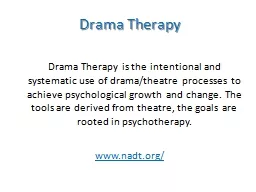PPT-Renaissance drama
Author : test | Published Date : 2016-08-07
Elizabethan theatre Structure of the Elizabethan theatre one of the most common form of mass entertainment people of all classes went to the theatre beautiful
Presentation Embed Code
Download Presentation
Download Presentation The PPT/PDF document "Renaissance drama" is the property of its rightful owner. Permission is granted to download and print the materials on this website for personal, non-commercial use only, and to display it on your personal computer provided you do not modify the materials and that you retain all copyright notices contained in the materials. By downloading content from our website, you accept the terms of this agreement.
Renaissance drama: Transcript
Elizabethan theatre Structure of the Elizabethan theatre one of the most common form of mass entertainment people of all classes went to the theatre beautiful costumes and. A drama is a story acted on stage for an audience.. Dramatic Elements. Dramatic elements are needed to bring a story to life on stage:. setting script speech character. props non-verbal actions conflict . What are the major differences. between drama and prose stories?. CCS-5-RL-5. . Explain major differences between drama and prose stories, and refer to the structural elements of drama (e.g. cast of characters, setting descriptions, dialogue, stage directions, acts, scenes) when writing or speaking about specific works of dramatic literature. Tragedy . It is a . serious. work of Drama that presents the . downfall. of its . protagonist. / . hero. (person better than ourselves) who through . some error in judgment. , . weakness of character. Early American Drama. The American . Company, managed . by David . Douglass. ,. . was the first professional company to produce plays in the American colonies. .. The first . production was . The Prince of Parthia. A story that is written to be performed. . It is a play put on for the public. . Movies are dramas that are caught on camera.. Drama Terms . Dramatization- the acting out of something. . Stage Directions- tells the actor how to act, where to stand, how to move, etc. . The Elements of Drama. The elements of drama are the features that give drama unique shape and form:. Role. and . character. are directed by . focus. driven by . tension. , made explicit in . time, place. Tuesday – Review of art and music. Wednesday – Binder checks and note cards. Thursday – Test. Friday – Sub. Monday – Make-up test. Tuesday – Start . Romeo and Juliet. writing assignment. A story that is written with the purpose of being performed in front of an audience.. Or in other words, a play. Dramas always have 5 major elements (& often more):. Rising action. Conflict. Climax. Note: All other images are from Microsoft clip art. Why It’s Important. humanism- belief in the importance of people. Renaissance- . French word meaning “rebirth”. people . became interested in the world around them. Ice-Breaker. Take a look at the film script for . The . Monsters . A. re Due on Maple Street. .. Steve. What was that? A meteor? . Don. . [. Nods. ] That's what it looked like. I didn't hear any crash, though, did you? . The Renaissance will see a shift in art - from art purely for the sake of glorifying God and teaching Biblical and Catholic lessons to art for the sake of . also. glorifying human beings and their Earthly emotions, experiences, surroundings. . duplo. and the . karagatan. .. . *. Duplo. – was a poetical debate held by trained men and women in the ninth night, the last night of the mourning period for the dead. . . Bellacos. – male participants, they are the heads of the games. . “DRAMA” Types of Drama Tragedy: [solemn, personal, religious & Social Issues] Tragic Flaw & Catharsis Types of Drama Tragedy:[solemn, personal, religious & Social Issues] - Tragic Flaw & Catharsis www.nadt.org/. Pam . Dunne, . PhD, . RDT-BCT. Drama Therapy. Drama Therapy Populations. at-risk youth. prisoners. homeless mentally ill. victims of sexual abuse and family violence. children with psychiatric disorders.
Download Document
Here is the link to download the presentation.
"Renaissance drama"The content belongs to its owner. You may download and print it for personal use, without modification, and keep all copyright notices. By downloading, you agree to these terms.
Related Documents

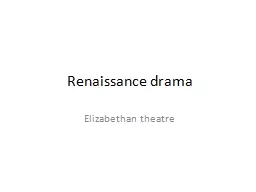
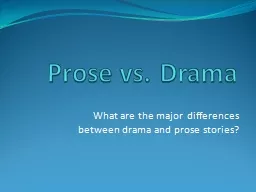
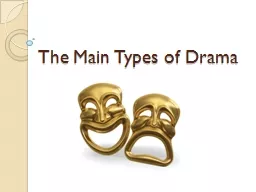


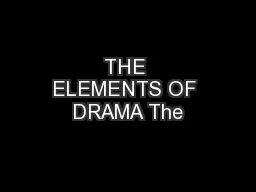
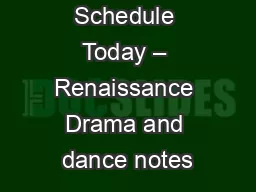
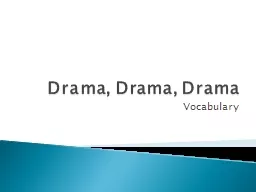
![Renaissance Italy http://www.kmkz.com/jonesj/gallery/renaissance italy[1].jpg](https://thumbs.docslides.com/717618/renaissance-italy-http-www-kmkz-com-jonesj-gallery-renaissance-italy-1-jpg.jpg)
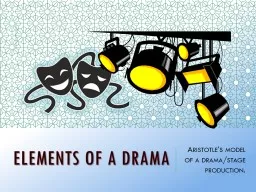

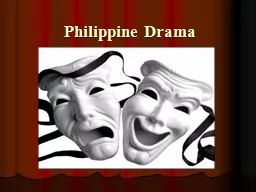
![“DRAMA” Types of Drama Tragedy: [solemn, personal, religious & Social Issues]](https://thumbs.docslides.com/762817/drama-types-of-drama-tragedy-solemn-personal-religious-amp-social-issues.jpg)
